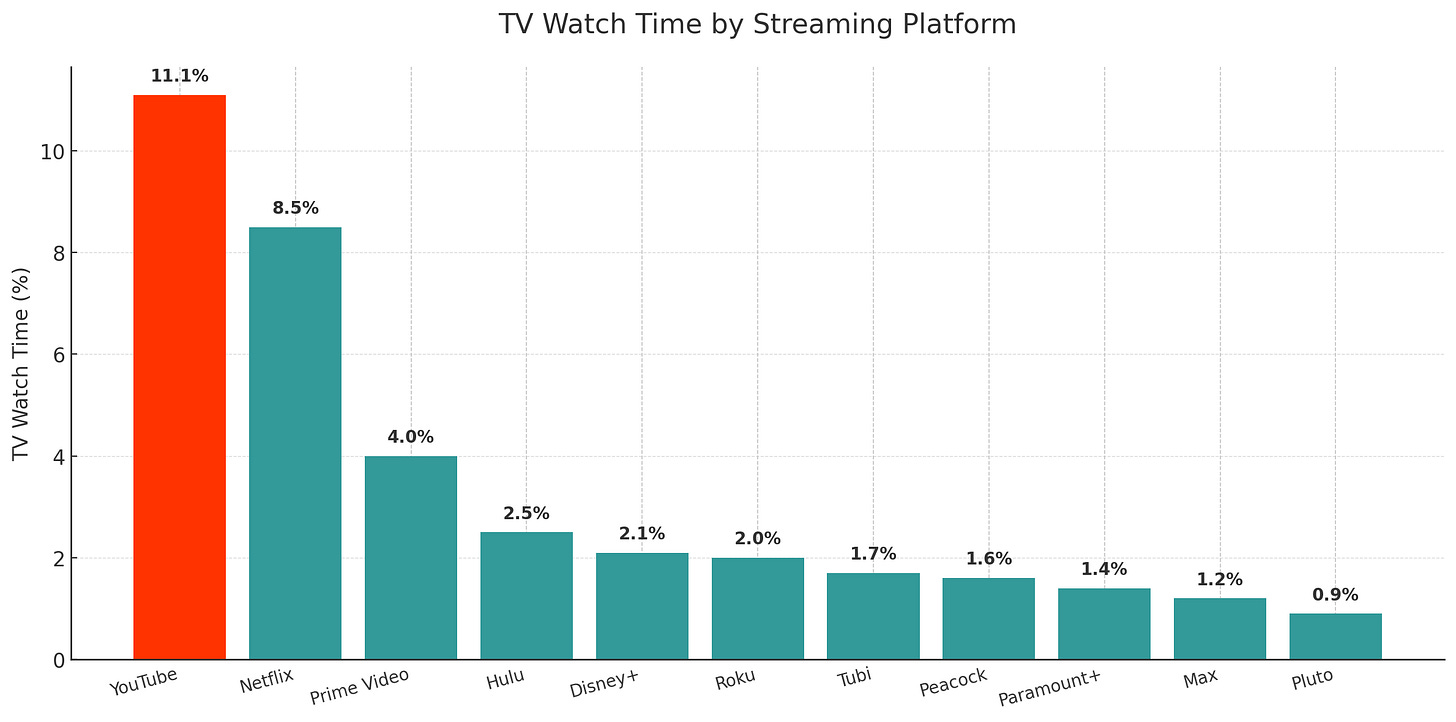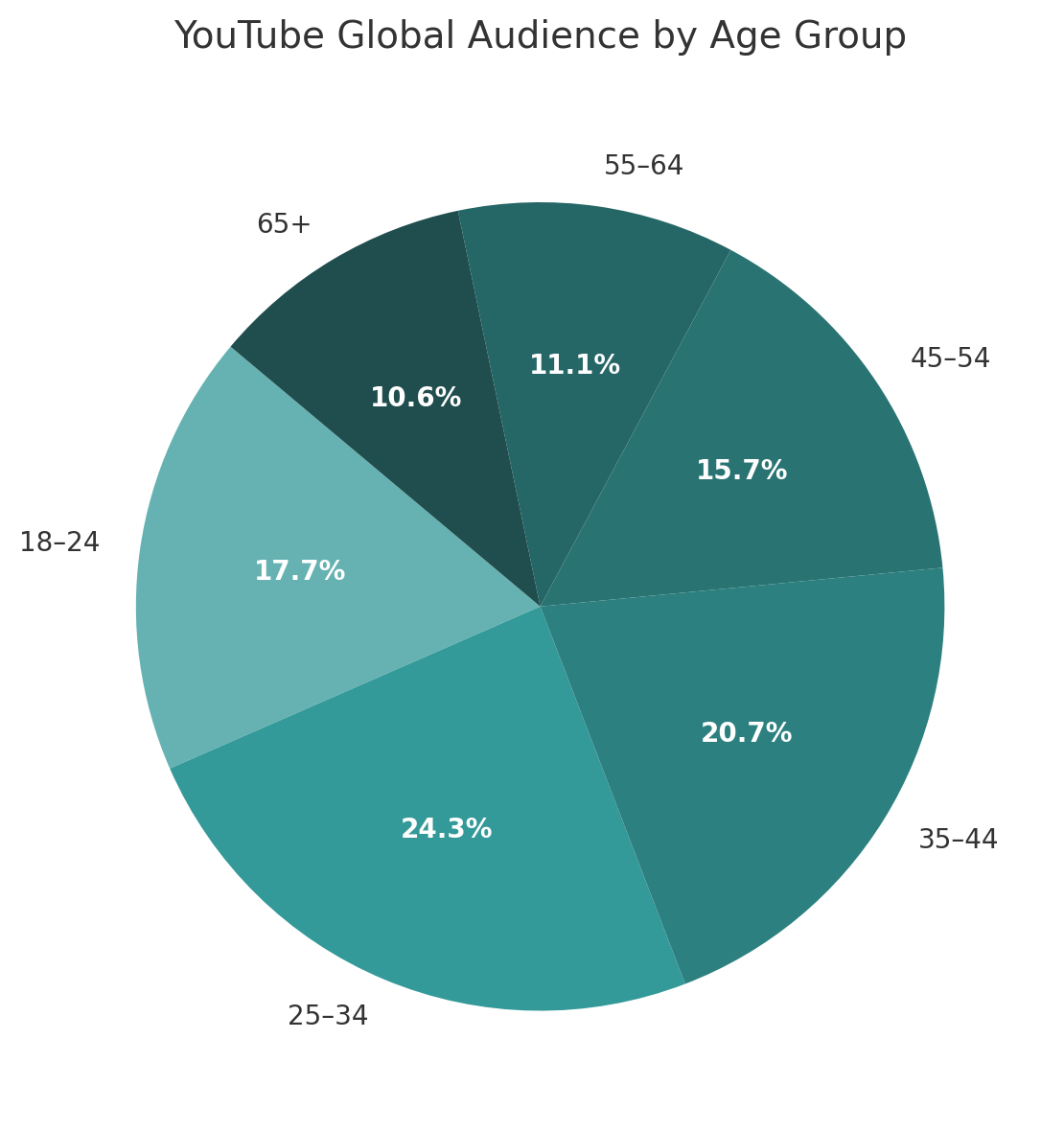Spending my first weekend back in Sydney, soaking up the cooler mornings and winter sun with the kids, a question pinged into my inbox from reader
.“Thanks for your coverage on the Google DOJ case. It’s been fascinating reading and helped a relative layman stay across what’s happening.
“I’d be curious to understand the implications of all this on YouTube, particularly the ad sales side.
“Will the break-up and opening of the data black-box have a positive impact on the CPMs and general value of YouTube viewership?
“For context, I’m coming at this from a video publisher standpoint with background in traditional TV ad sales.
“The consumer shift to YouTube is undeniable but the sheer drop-off in value when placing content on YouTube is a real issue.”
Thanks for the question, Tom.
Just before we dive in, welcome to new subs over the past few days from the editorial leadership at Bild in Berlin, part of publishing giants Axel Springer, from leading global TV, film, and digital distributors All3Media in London whose portfolio includes Squid Game which was watched for 271 million hours last year (just under 31,000 years), Australia’s news.com.au, Dutch cross-media measurement team Beatgrid Media, New York strategy agency Digennaro, antitrust law firm Dietrich Grafzedtwitz in Düsseldorf, New Zealand podcasters Backchatmedia, and Canada’s prestigious McGill University with students from 150 countries. Welcome all :)
Righto, let’s go…
YouTube is a video powerhouse that’s right on the cusp of overtaking Disney as the world’s most valuable broadcaster.
It launched on Valentine’s Day 2005 with this video about elephants, and launched a rocketship.
Users exploded to 50 million in its first year, sending it soaring to a 46 per cent share of the then-still-emerging video market.
That ignited a fierce bidding war to own it. Google, News Corp, Viacom, Yahoo, and Microsoft, all threw hundreds of millions at buying it.
Google emerged victorious, digging into its coffers to splurge $1.65 billion. But over at YouTube, it wasn’t money the founders wanted, they were after protection.
Users were uploading copyrighted video and music to YouTube millions of times a day, and legal attacks were coming from all directions.
YouTube needed Google’s tech, money, lawyers, and heft to shield it as it navigated a way through the IP minefield.
As soon as it was wrapped in Google’s blanket, it had the gravitas and funds to sign rights deals, make friends with the music industry, and build an advertising giant.
Last year, YouTube banked US$36.1 billion, but it’s on the up. The past quarter saw earnings hit US$10.4 billion, making it Google’s fastest growing unit (+13.5 per cent).
Search is at 12.5 per cent and slowing. How’s this for a chart?
But this $10 billion doesn’t include the money YouTube makes from subscriptions, which Google keeps carefully hidden by blending it with other financial reports.
What is public though is that YouTube Premium and YouTube Music boast a combined 100 million paying subs, which means it adds at least another $10 billion.
That puts YouTube right on the tail of the Mouse House, Disney, which has been the world’s most valuable broadcaster since buying LucasFilm, Marvel, Pixar, and 21st Century Fox, in 2006.
But where Disney has market cap, YouTube has momentum. Its numbers are stellar.
It’s the number one streaming platform in the US, surpassing even Netflix.
It has 2.53 billion viewers globally, roughly 30 per cent of the global population.
Almost 15 billion videos are available, with 500 new hours uploaded every minute.
It’s passed Spotify and Apple as the leading podcaster with a billion listeners, and
Big screen TV is now its primary platform, with a billion hours watched daily.
That puts it at the forefront of the shift from broadcast to streaming, which Nielsen reports is now 43.3 per cent of all viewing in the US last December.
Another of YouTube’s big wins has been to convert its web streamer into apps that are on every TV, and mobile.
But probably its greatest strength is its youthful audience profile. The largest is males aged 25–34, which means its growth is likely to continue for some time yet.
It also has more women viewers than men in the US, who are more typically more attractive to advertisers.
And nine in 10 US teenagers aged 13 to 17 say they use it, with 15 per cent saying they are on YouTube “almost constantly”.
Wow. What a business!
Only…
YouTube is part of Google, which means it’s a sub-division of an illegal monopoly. That means major change is coming.
There have been rumours for years that YouTube has felt limited within the Google family, where search has always had the lion’s share of attention and investment.
That could now change.
So, Tom asked:
“Will the break-up and opening of the data black-box have a positive impact on the CPMs and general value of YouTube viewership?
“For context, I’m coming at this from a video publisher standpoint with background in traditional TV ad sales.
“The consumer shift to YouTube is undeniable but the sheer drop-off in value when placing content on YouTube is a real issue.”
What we have seen so far is what Google has allowed us to see. We don’t really know the real micro-economics of how it banks its billions.
The only numbers that have been made publicly available on streams, views, CPMs, and the like, are what Google has chosen to reveal in its blogs, or what its execs have said on stage.
It’s the same playbook Google used to monopolise display. Its reporting is deliberately opaque to protect its lead. There was plenty of testimony on that.
Surprisingly, we didn’t even get much of a peek inside YouTube’s black box during the trial, while we did get some into Google’s other ad businesses.
But that might be about to change.
The judge managing the Google ad tech break-up has been asked by the Department of Justice to reveal the numbers to the market for the first time.
My prediction is that we are about to discover something very distasteful.
YouTube has been offering broadcasters and publishers access to its audience for years.
Its promise has been give us your video, and we’ll get it to billions of viewers.
Google offers the YouTube video platform for free and backs it up by offering to help sell the ads in return for revenue shares of 60/40 in the video owners’ favour.
But this is never as sweet as it sounds, as publishers learned by falling into the programmatic yield trap.
What I predict we will discover when the curtain is pulled back is that YouTube has been selling publisher/broadcaster video for far more than it’s been claiming.
At flashy Hollywood events, YouTube gets on stage and tells its partners what CPMs it is seeing advertisers pay for video. In Australia that’s typically been ~$16 CPM or so.
Because of YouTube’s size, this sets the effective video CPM meaning that when publishers go to agencies, that’s the price they’re offered.
Only what YouTube hasn’t been telling publishers is that it’s been selling the same pre-rolls on the same video to the same advertisers for ~$80.
It’s done this through a network of strategies.
First, it garnishes the publisher video data with its own customer data to hike the price.
Second, it has trading deals with the agencies requiring them to hit a minimum spend if they want to continue to receive services, like targeting data and other initiatives.
The outcome is that more ad spend goes to Google, meaning publisher sell through falls.
YouTube then has more inventory to sell at the higher price, and YouTube revenue grows, while publishers and broadcaster revenue shrinks.
The DoJ’s remedies are designed to force this sleight of hand into the light.
If Google’s forced to release its ad data under remedies, the real market may be revealed for the first time in two decades - and that could begin as soon as August.
Tom asks: “Will the break-up and opening of the data black-box have a positive impact on the CPMs and general value of YouTube viewership?
Hmmm.
The market we are in today means that Google makes the money while the content creator makes less - and only Google knows how.
Visibility should spawn competition, and publicise the real world CPMs for premium video.
That should enable content creators to put pressure for higher returns from YouTube and increase content creators’ ability to sell direct for higher prices.
But Google won’t take this lying down.
If it were advising Google, I’d spin YouTube off to free it to accelerate its efforts to own the future of broadcast.
With revenues at $54 billion and growing fast, YouTube is an incredibly valuable company, and probably worth more to shareholders outside Alphabet.
That would also free it to compete with Google search for ad share and invest more heavily in building on its narrow lead over Netflix, Spotify and Apple.
That should be good for content creators reliant on ads, and it should lead to a more competitive market for licensing, as the big guns write big cheques to stay ahead.
But if Alphabet keeps YouTube within the family, as it might to protect the mothership, then it will be dragged into years of legal appeals.
So, no clear answer yet, but here’s what we do know.
We are likely to get a peek into YouTube’s advertising black box.
This will create a window of opportunity to push up CPMs.
Publishers and broadcasters need to be readying for that now.
It may also push up the value of licensing content.
But it could be sucked into the great Google appeals vortex.
Hope that helps Tom.
And if you have a question, please drop me a mail below :)

















Share this post